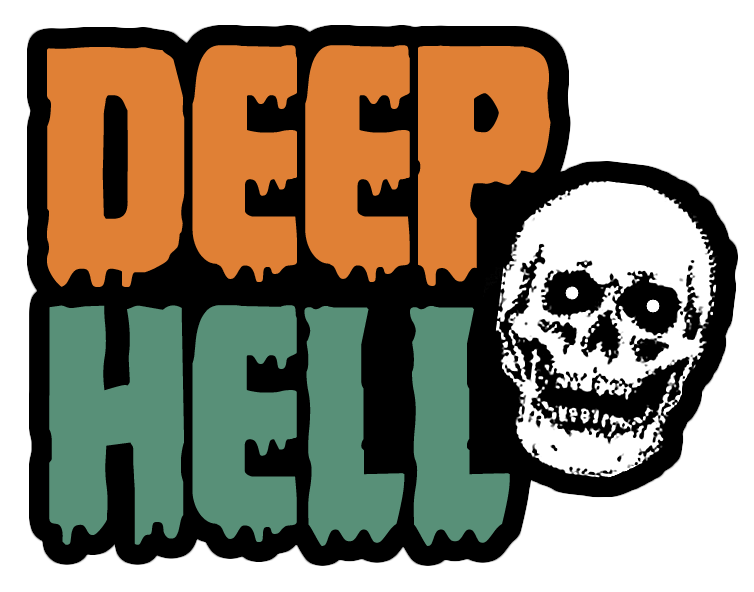By Bryn Gelbart
Fortnite used to be a joke. Literally.
On the Giant Bombcast in the years leading up to Epic’s release of the game in 2017, the question “what is Fortnite?” was a running gag. With each passing E3, TGS, and PAX that Epic wasn’t showing its new tower defense building game, it became more and more unclear what Fortnite would actually wind up becoming. Even when it launched, the Battle Royale mode that is now understood as *the real game* was a cash-grab spin-off from the game that got rebranded as “Fortnite: Save the World” — a game I’ve never heard a single soul speak of.
Fortnite was mask-off from the start, which I think is why I managed to avoid it for so long. It was a forced pivot for profitability’s sake. When it came to choosing a Battle Royale at the height of the craze, Fortnite had baggage that games like Apex Legends just didn’t. So when the one thing that could make the whole soulless charade even more insidious happened, it happened to Deep Hell. Fortnite, we realized, was at last a good video game.
Zero Build mode changed things — as is evident by the recent uptick in new Fortnite players. Building things was shit, as it turns out. In Zero Build, we got a chance to see everything else that has seeped in over the years to make Fortnite’s loop easier to get into a groove with (more rewarding once you do). The world, too, has expanded. This time around, as opposed to when I first checked out the game in 2018, the brands have invaded and had enough time to burrow their way into the game’s DNA. With them come cool and fun weapons and the off chance of seeing Goku killing Darth Vader with a kamehameha. You can’t unsee that shit. You can’t un-love how that bow feels.
The original post Skeleton made for the website’s Battle Royale themed month was called Ready Player Fortnite. I honestly can’t think of a better way to describe the product Epic is currently offering. The accumulation of nerd IP within Fortnite’s digital walls has reached a critical mass. The Battle Pass rewards come any time a property holder likes, for a limited time before the brand promptly checks out. But they can never *really* leave. The echoes of past crossovers can be seen on players in every match, in their skins. From Dr. Jekyll to motherfucking Rick “The Walking Dead” Grimes, the burden of the past in Fortnite exists to trigger your FOMO.
Underneath the skin, fear is what drives the V-bucks economy. By and large the Battle Passes aren’t designed for strict profit extraction. If you put a modest (by the standard’s of an unemployed teenager on summer break) amount of hours you will earn your next pass. This means a one time payment will get you from month to month as long as you invest the time. But we aren’t unemployed teenagers and life is god damn short enough so yeah, we pay $12 for Indiana Jones or Wolverine because at least that shit means something to us.
It’s easy to start to hate yourself for acting on that feeling. The aching dread that an opportunity is designed to and will pass you unless you dedicate serious resources to it. Snuffing out the anxiety is worth a modest amount of Virtual bucks. Hell, at least it’s something you like. Coming into Fortnite now, it’s astonishing to see everything that’s been stuffed in there. By necessity, there needs to be something for everyone. But also, by an equal amount of necessity, getting to that point is a time consuming process. Fortnite was blessed with the popularity to be able to eclipse itself, becoming the all-game; a social hub where you can escape into your favorite avatar; a Battle Royale game for the gam5rs; a venue for concerts, the celebrity face of the metaverse. This is the future of Fortnite and it starts now.
Engaging with a lot of this shit exhausts me. At its heart, the entire battle royale genre is as heightened as the bright, brash hues of Tomato Town. From its 1999 inception as a novel based on some weirdo’s literal nightmare, Battle Royale was always a bloodbath of comic proportions. A worst-case result of a fascist takeover, resulting in a government using children as tools of fear. It is loud. The genre is rooted in its namesake tome, this deeply specific critique of the oppression of Marxist students in 1960s Japan. It is a nightmare born from fear.
Fortnite embraces the disconnect from reality to cater to larger and more niche audiences simultaneously as it grows. The bodies of the children who lose in Fornite don’t pile up in Lazy Lagoon. But the origins remain intact. Fear is a weapon and Fortnite’s weaponization of our limited time is deliberate.
When it comes to how it goes about asking for your money Fortnite is no more insidious than any other free-to-play video game. What I hate about Fortnite is it doesn’t have an identity of its own. It builds one from scraps and leftovers. It is a claw machine full of convincing off-brand toys.
“What are you buying?” Fortnite asks, its pockets overflowing with gizmos and gadgets. I jump and exclaim “You won’t get your hooks in me the way you did them!”
I turn around. Quickly, now. Don’t think. Board the bus.



